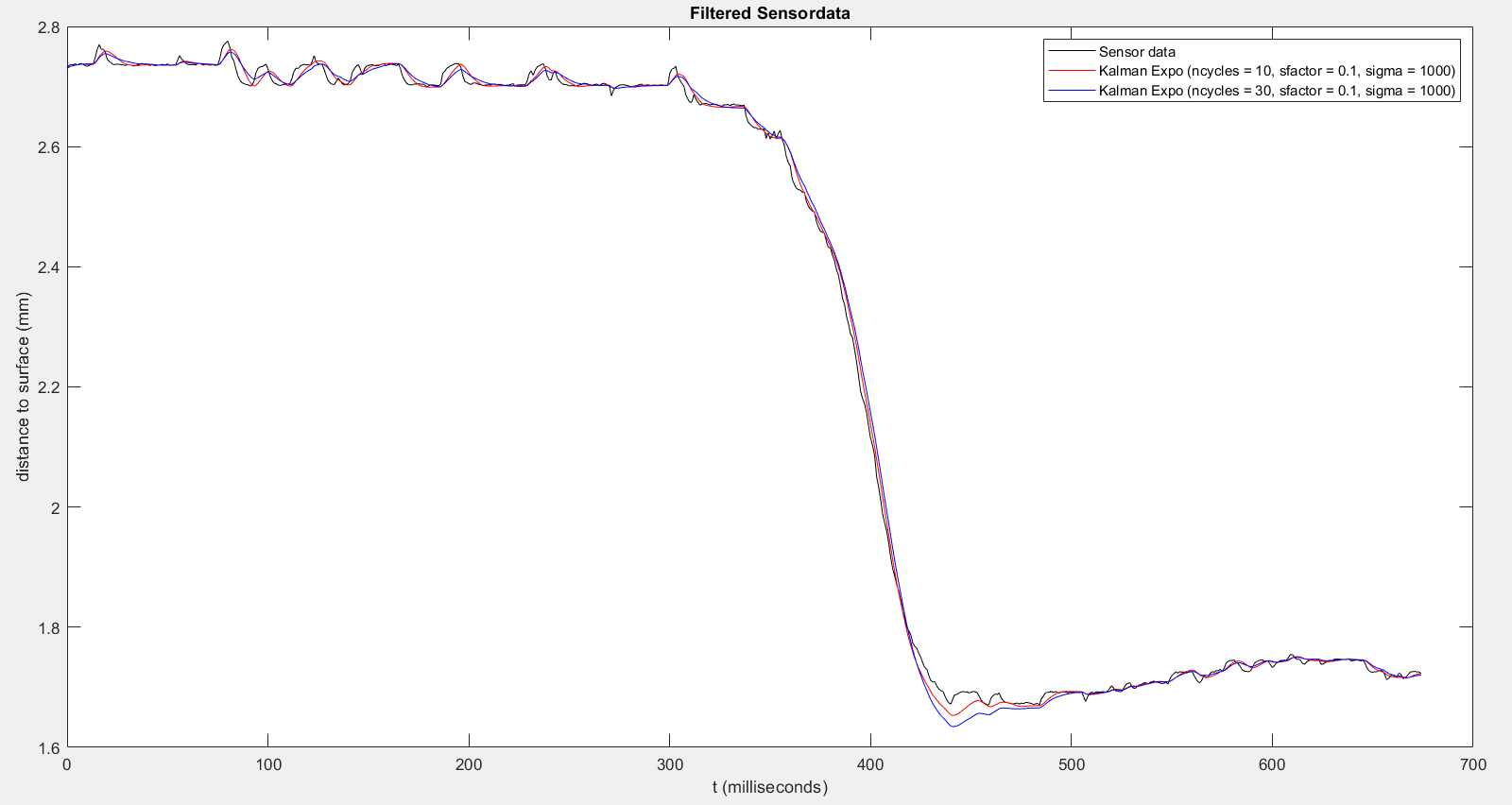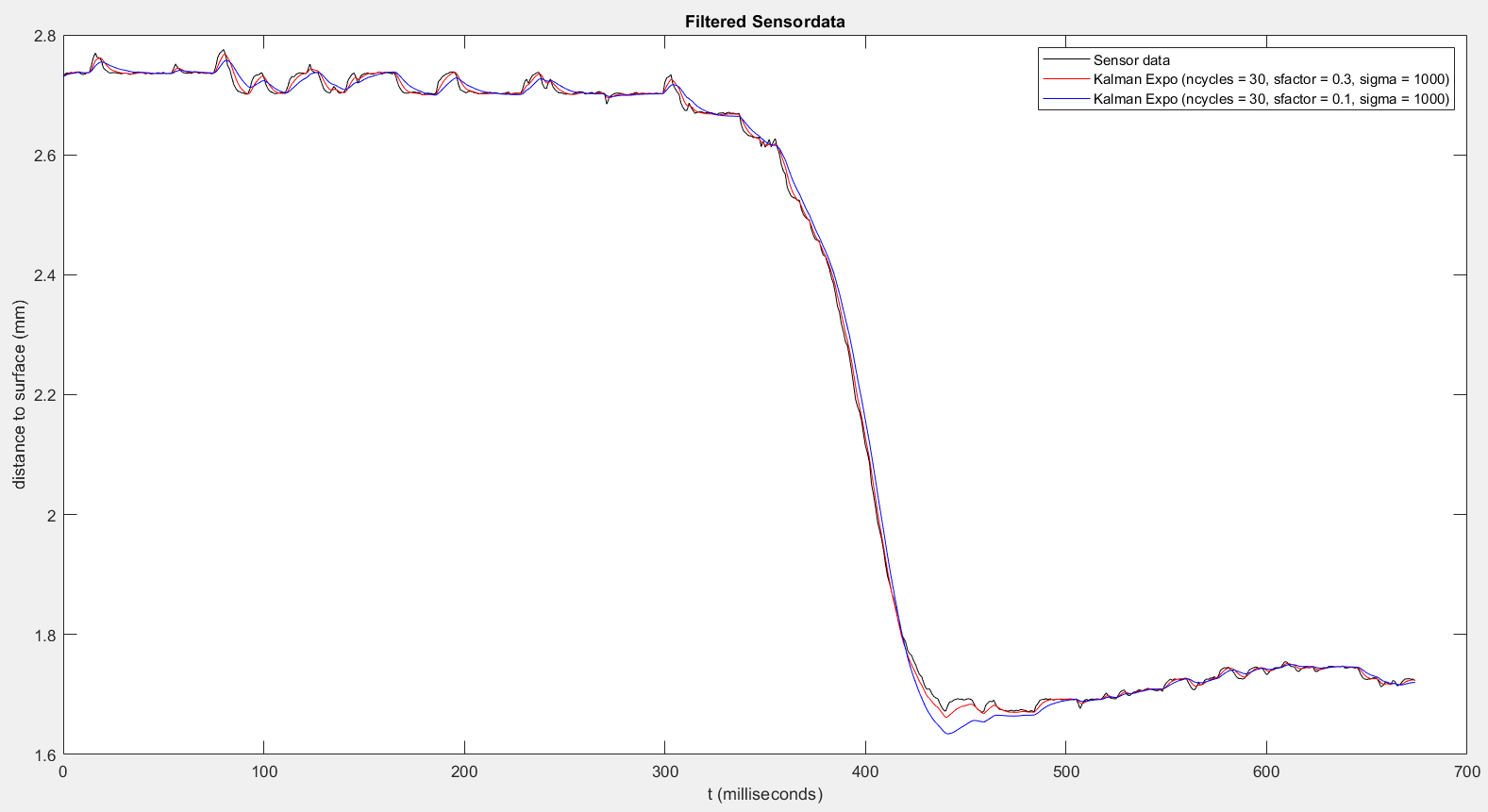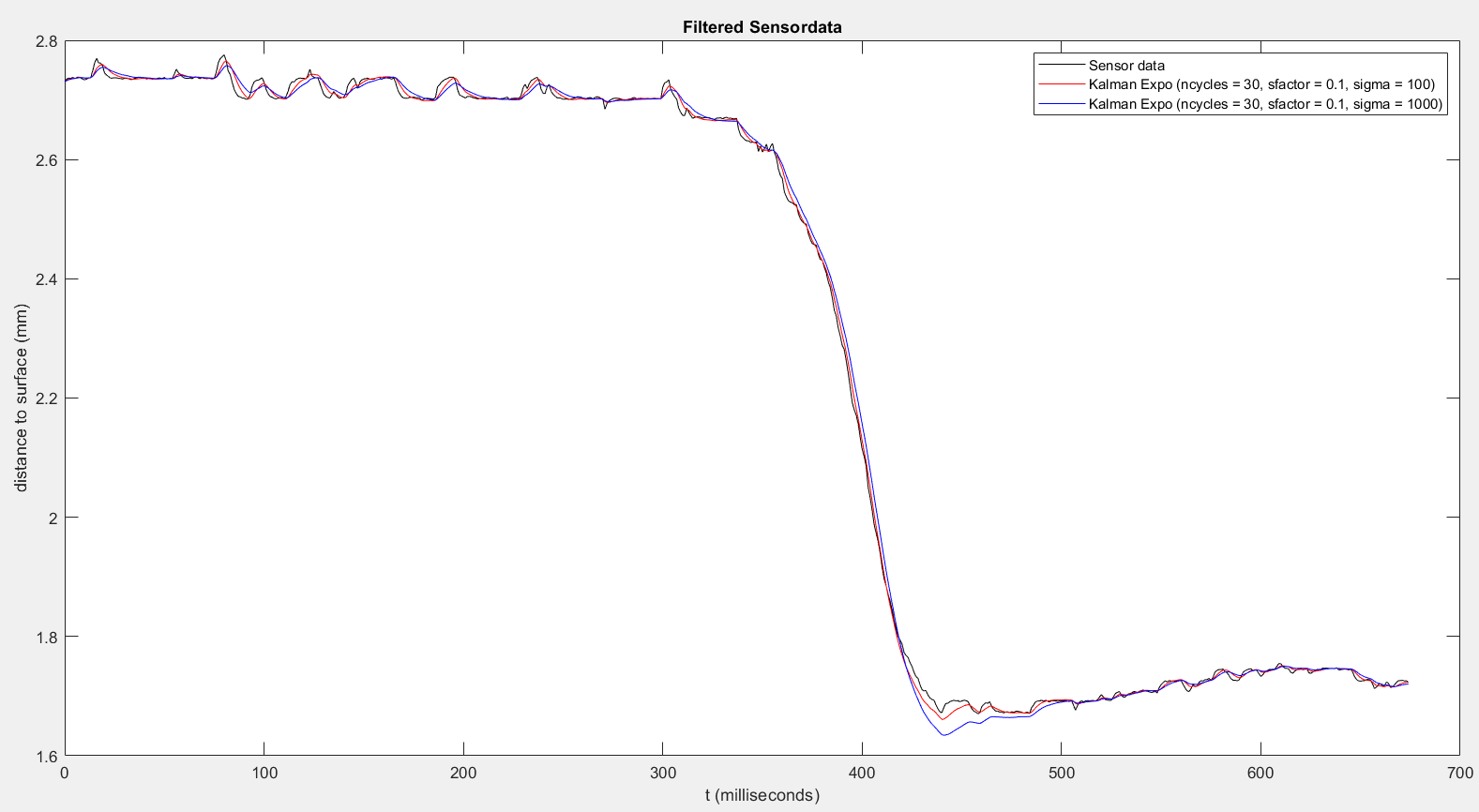Influence of parameters:
Number of measured values - n_cycles (P-AXIS-00413):
The parameter P-AXIS-00413 specifies the number of measured values that are included in the prediction model of the exponentially weighted averaging filter. Accordingly, the larger the number of included measured values, the better the smoothing effect. The prediction characteristic of the Kalman filter reduces the dead time compared to a conventional exponential averaging filter. However, it should be noted that the dead time of the averaging filter leads to an oscillation with large changes in distance. The distance increases as the number of included measured values rises (P-AXIS-00413).

Smoothing factor (P-AXIS-00784)
The section Exponentially weighted averaging filter explains the influence of the smoothing factor on the exponentially weighted averaging filter. The oscillation caused by the dead time of the filter can be improved by a higher weighting of the current measured value. At the same time, however, this reduces the smoothing effect.

Degree of uncertainty - sigma (P-AXIS-00783):
The parameter P-AXIS-00783 indicates the degree of uncertainty of the recorded measured values. The lower the specified uncertainty of the measured values, the more the prediction from the moving averaging filter is approximated to the actual measured values.

Example

Example parameters: Kalman filter with exponential model
kenngr.distc.filter_type KALMAN_EXPO #Filter type
kenngr.distc.n_cycles 30 #Number of included measured values
kenngr.distc.kalman_sigma 1000 #Uncertainty of measured values
kenngr.distc.smoothing_factor 0.3 #Smoothing factor